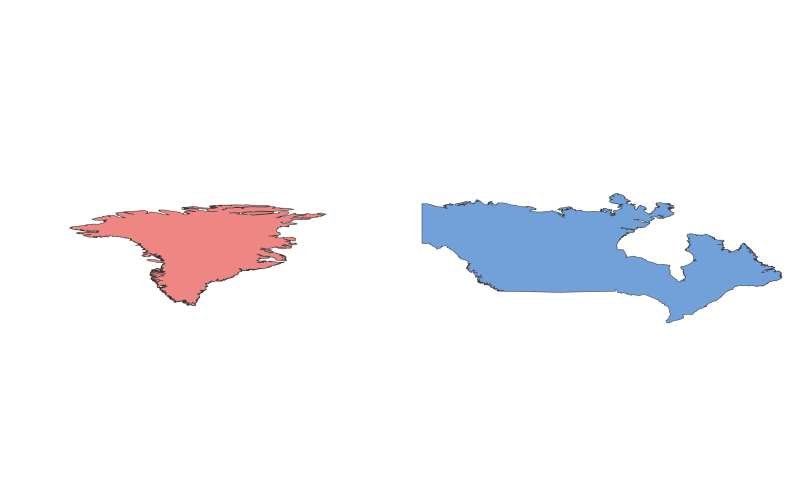Greenland vs. Canada: A Geographical Comparison

Comparison Table
| Category | Greenland | Canada |
|---|---|---|
| Location | Northeast of North America, between the Arctic and Atlantic Oceans | Northern North America, bordered by the Atlantic, Pacific, and Arctic Oceans |
| Size | ~2.16 million km² (world's largest island) | ~9.98 million km² (second-largest country by land area) |
| Climate | Arctic to subarctic, with long, cold winters and short, cool summers | Varies widely: Arctic in the north, temperate in the south, and subarctic in central regions |
| Natural Resources | Ice, minerals (rare earths, zinc, lead), fish, hydropower | Oil, natural gas, minerals (gold, nickel, uranium), timber, freshwater |
| Urban Development | Small, scattered settlements; Nuuk (capital) has ~18,000 people | Highly urbanized; major cities include Toronto, Vancouver, Montreal |
| Transportation | Limited road network; reliance on boats, helicopters, and snowmobiles | Extensive road and rail networks; major international airports |
Description
Greenland
Greenland, an autonomous territory within the Kingdom of Denmark, is the world's largest island. Its history is deeply tied to Inuit culture, with Norse settlements dating back to the 10th century. Today, Greenland's population of ~56,000 is predominantly Inuit, and their traditions remain central to the region's identity. The economy relies heavily on fishing, tourism, and subsidies from Denmark. Climate change is a pressing issue, as melting ice opens new opportunities (e.g., mining) but also threatens traditional ways of life.
Canada
Canada is a vast, diverse country with a rich Indigenous history and colonial past. It became a self-governing dominion in 1867 and is now a multicultural federation with two official languages (English and French). Canada's economy is highly developed, driven by natural resources, manufacturing, and technology. Its cities are global hubs for finance and culture, while its northern regions remain sparsely populated. Canada is known for its high quality of life, progressive policies, and stunning natural landscapes, from the Rocky Mountains to the boreal forests.